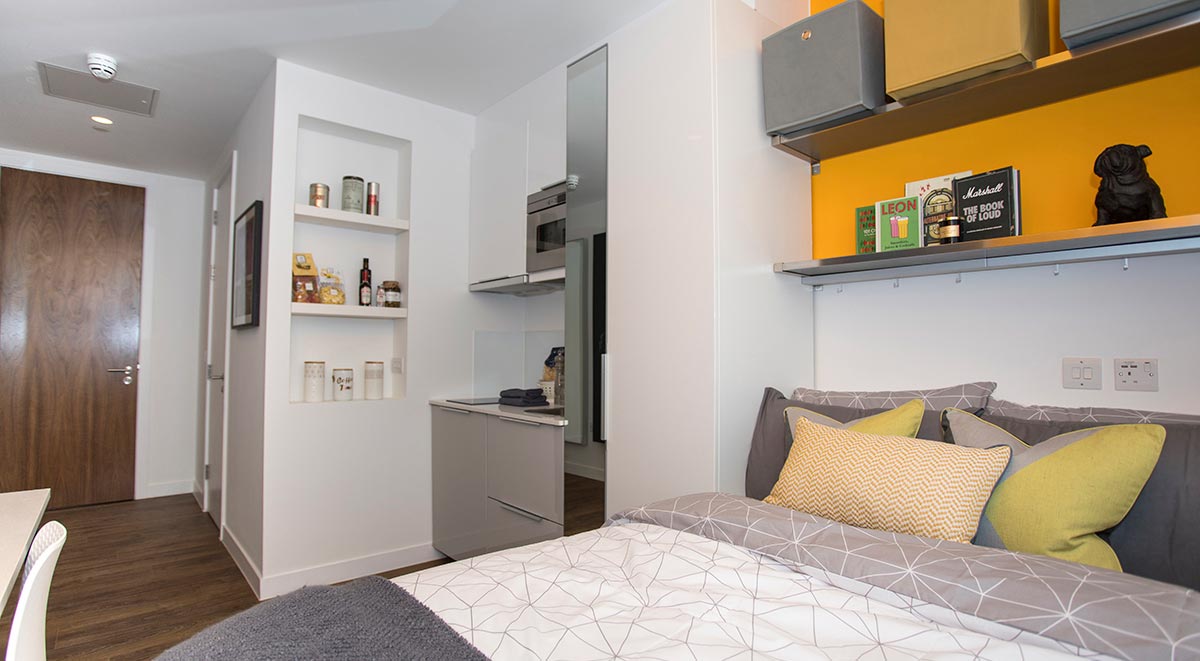Rise in number of student beds in Scotland’s biggest cities
A total of 1,688 new student bed spaces were created in Glasgow and Edinburgh in 2018 taking the number of purpose-built spaces in the two cities to 34,821, according to new research from Cushman & Wakefield.
Cushman & Wakefield’s UK Student Accommodation Report 2018/19 showed that while Glasgow saw an increase of 1,231 additional spaces to 17,242, the capital reported just 457 new bed spaces being created last year.

Riverside Glasgow
The growth in Glasgow is thanks to the launch of new developments including Downing Students’ West View and Homes for Students’ Riverside Glasgow. A million miles from the damp, cramped flats of days gone by, West View offers every comfort including a cinema room, games room and gym – equally desirable, Riverside is located in a picturesque setting on the North Bank of the River Clyde.
David Feeney, UK student accommodation advisory at Cushman & Wakefield, said: “All of Glasgow’s Higher Education institutions have seen continued sustained growth over the past five years, which has led to extensive developer interest in the city. Rental growth has remained muted in the past year at just 1% reflecting the levels of the competition in the market.
“Going forward it is likely that future rental growth will be dependent on a continuing increase in student numbers with the best developments set for success i.e. those that are well located, within 10 minutes of a university campus, offer high quality social amenities and crucially, value for money.”
Surprisingly given that Edinburgh has the largest number of purpose-built student beds in Scotland at 17,579, only one significant development was launched in the last 12 months, the 305 bed Vita Edinburgh scheme. With rents as high as £327 per week, it offers luxury accommodation and a host of additional benefits including talks from inspirational speakers, weekday grab and go breakfasts and free-to-use bikes.
David added: “Lack of suitable space in the city centre constrained growth, however we expect 800 new beds to be created in 2019.”
He added: “Despite a strong market performance in 2018/2019 for student accommodation, there is a degree of uncertainty around the future of the student population in Scotland as there are so many EU students studying at Scottish universities that currently do not pay tuition fees.”
Overall the UK student accommodation market continued to flourish in 2018, with 31,348 new beds delivered for the 2018/19 academic year. This has taken the total number of purpose-built spaces available to a record 627,115 and a further 36,000 new rooms are expected to enter the market in 2019.
Across the UK rents per bed space in student accommodation increased 2.8% between academic years 2017/18 and 2018/19, largely in line with the 2.7% observed in the previous year – indicating continued health across the market.
However, the quality of amenity spaces, such as common areas, is more important than ever to the success of schemes with those offering high-quality amenity spaces experiencing a 3% annual increase in rents, compared with poorer quality spaces only managing to attract a 2.5% increase.
David Feeney added: “The student accommodation market shows no sign of decelerating with another record-breaking year of student bed-space provision in 2018. Even with the uncertainty caused by Brexit we don’t expect the UK to become any less venerated as a top location for study and predict the upward trend to continue in 2019.
“Students are increasingly discerning when they select a university and the quality of amenity spaces is more important than ever to the success of schemes. With the private sector tendency towards individual rooms and amenity quality, there is a real opportunity for developers to meet increasing demand, in a market where students are not just weighing up the quality of their course, but the quality of facilities too.
“Over the coming year we will see more re-provisioning of bed spaces into high-grade communal spaces and an increasing number of private-university partnerships to achieve outstanding living spaces for students close to academic buildings.”

















